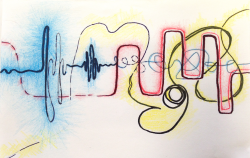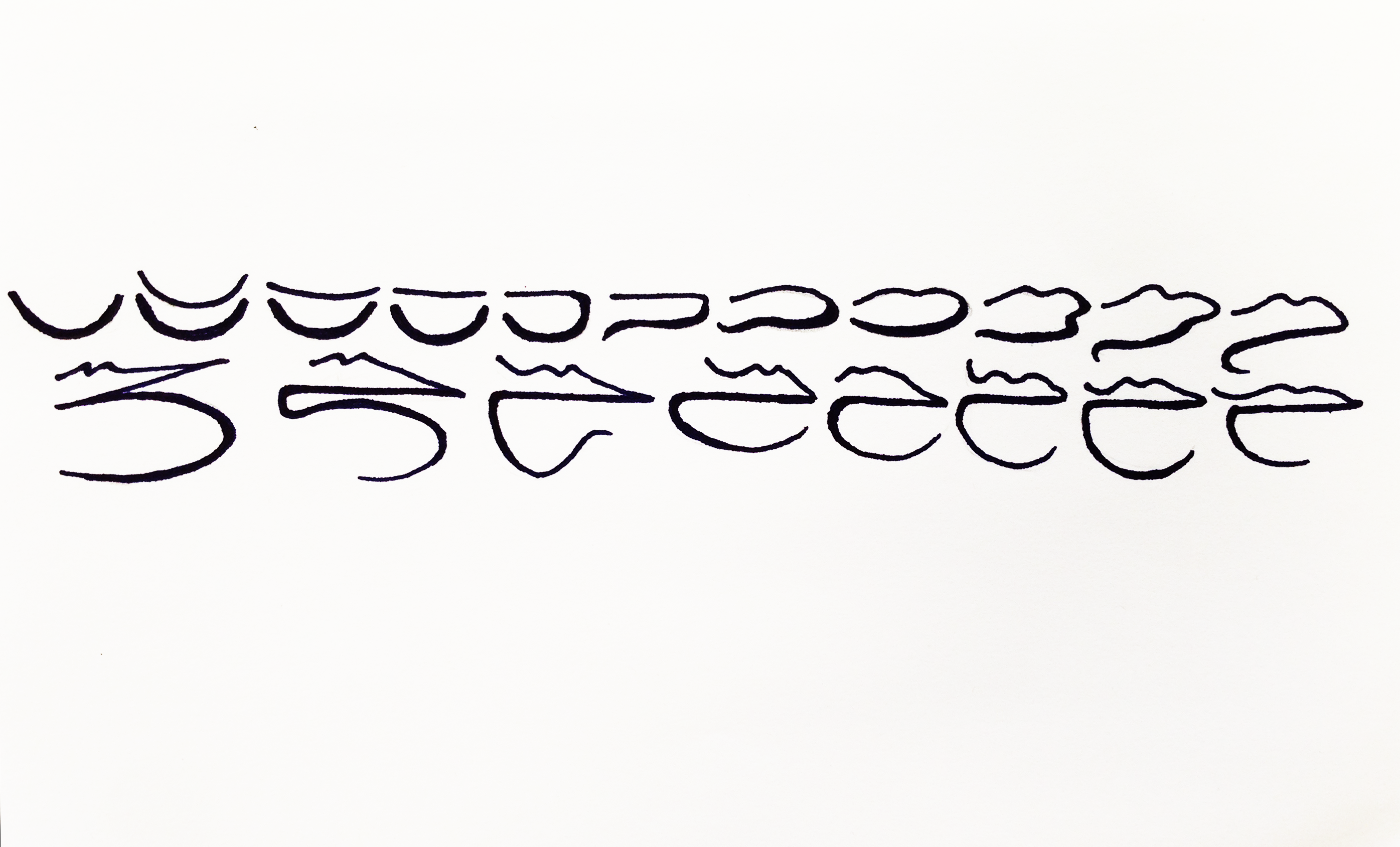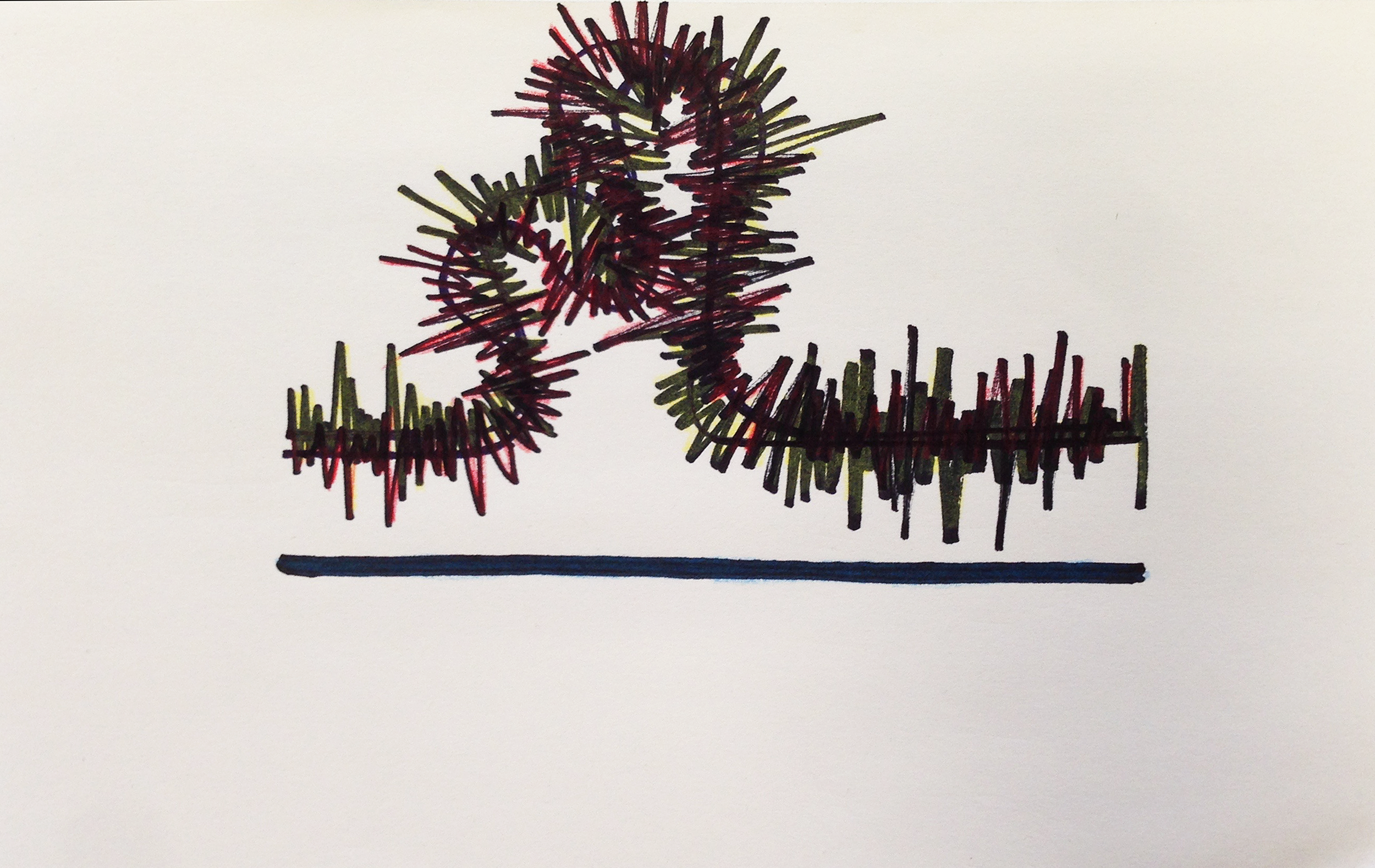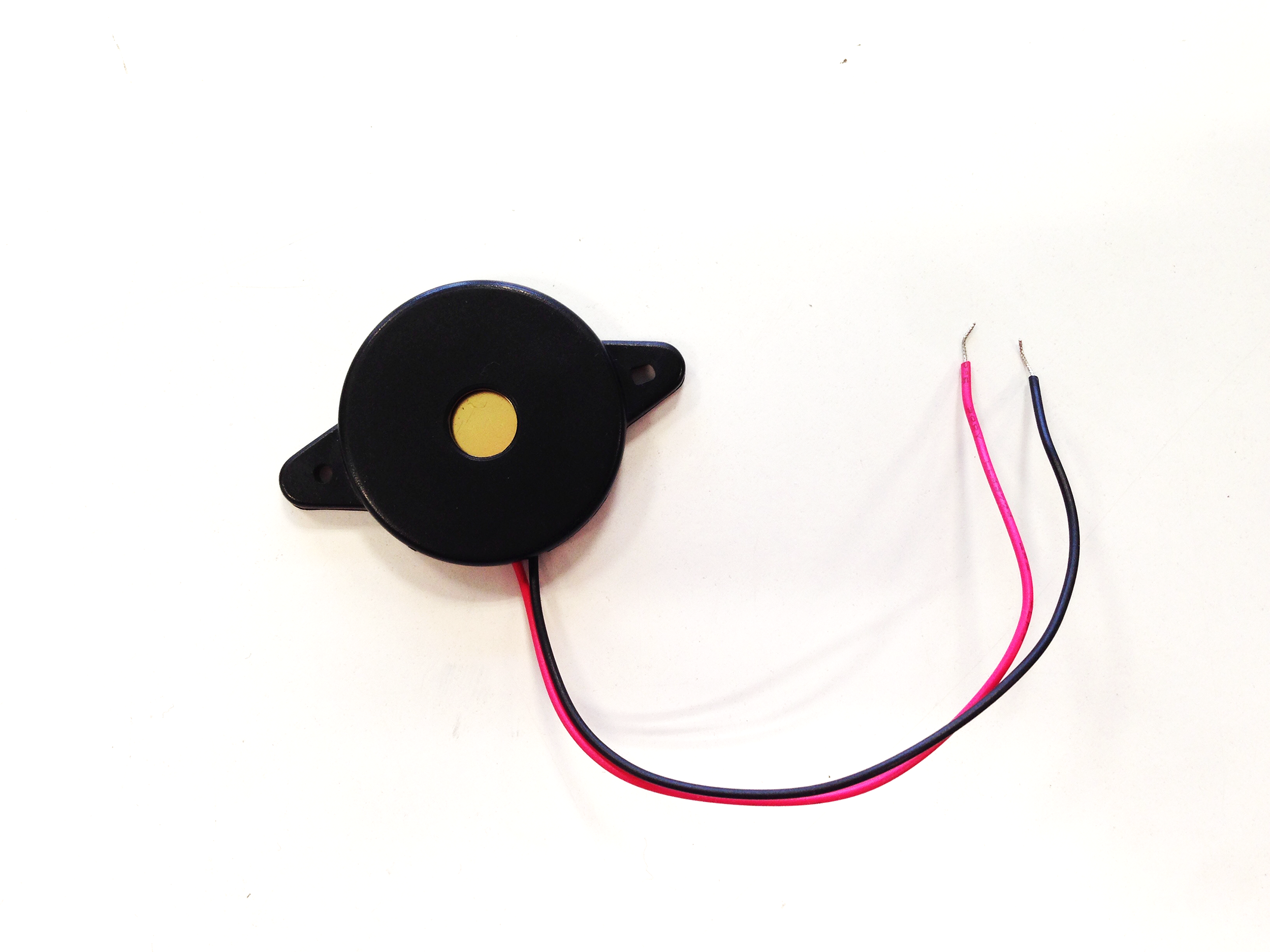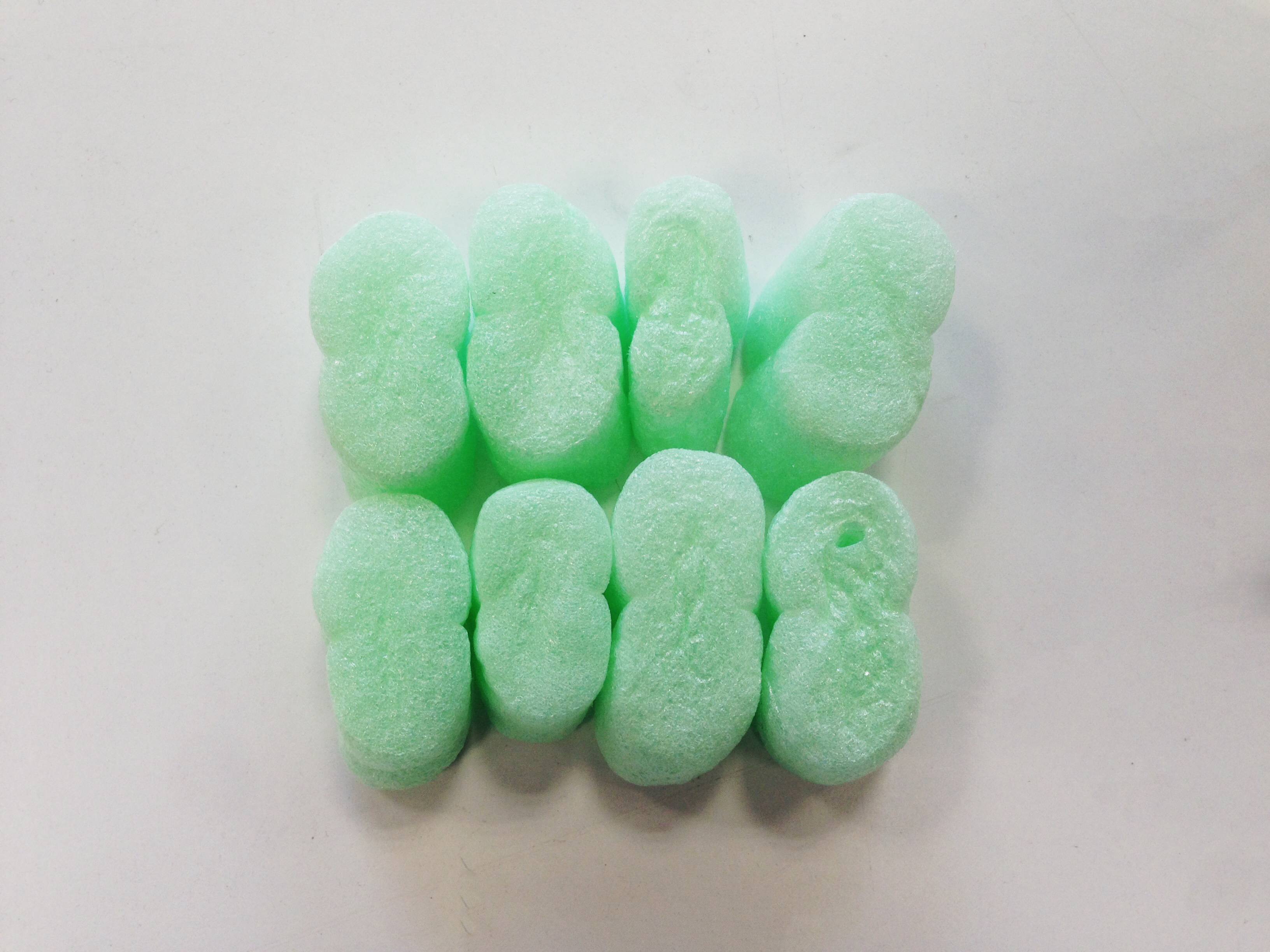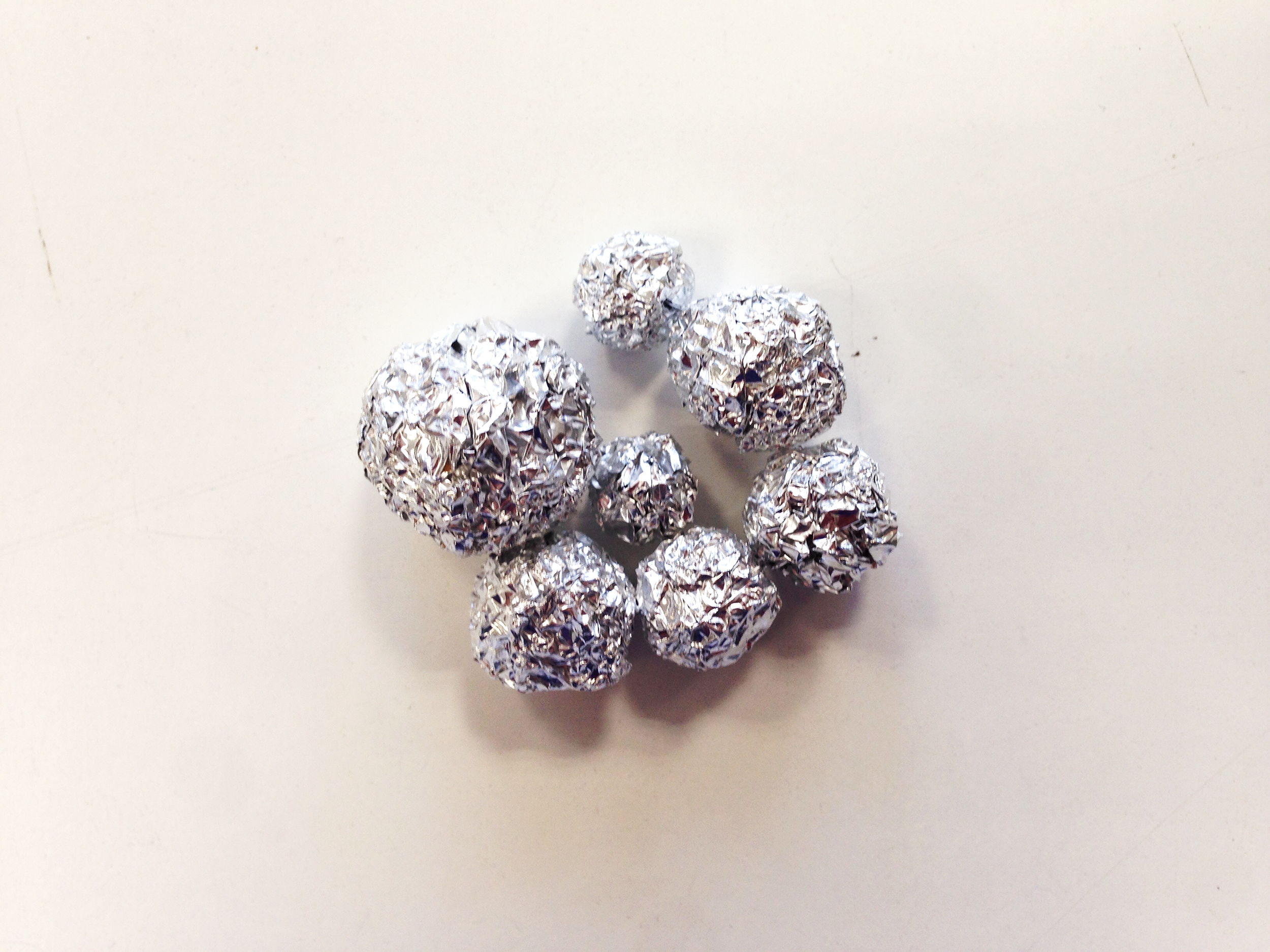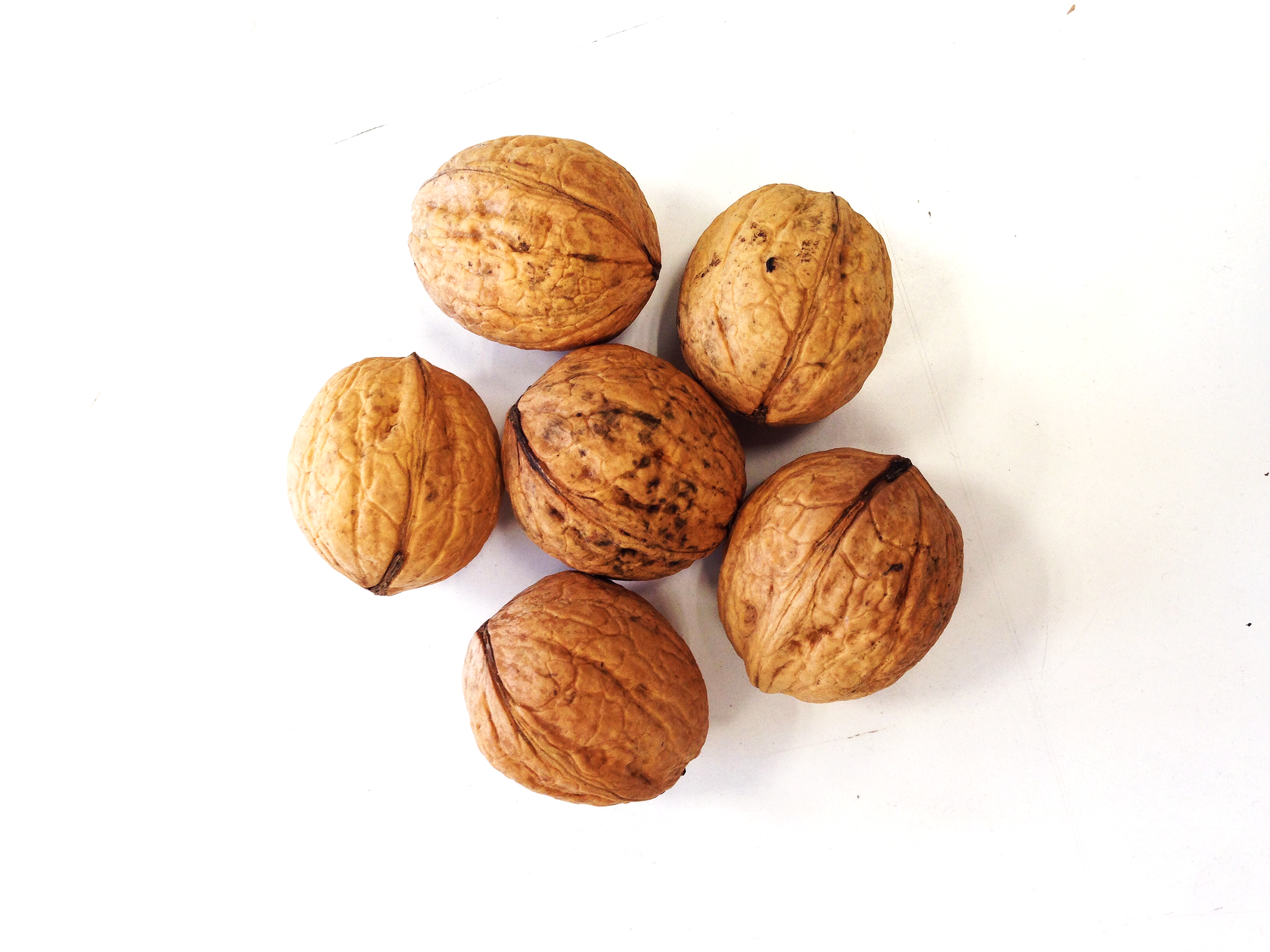No edit summary |
|||
| Line 19: | Line 19: | ||
3. A fond memory | 3. A fond memory | ||
[[File:drawing3. | [[File:drawing3.png]] | ||
For the last drawing, I thought back to a simple but very fond memory of mine – when my parents and I made homemade dumplings in our living room. It was a very normal night for us. The TV was on in the background, and we were sitting on the floor, putting the stuffing into the dough. I remember my dad decided to help out; together, the three of us just talked and made dumplings together. At one point, we laughed so hard at my dad’s joke that I cried. The sounds from that memory are the best sounds I can imagine. These sound waves not only represent the highs and lows of the event but also what our laughter looked like. They were similar in form and volume. | For the last drawing, I thought back to a simple but very fond memory of mine – when my parents and I made homemade dumplings in our living room. It was a very normal night for us. The TV was on in the background, and we were sitting on the floor, putting the stuffing into the dough. I remember my dad decided to help out; together, the three of us just talked and made dumplings together. At one point, we laughed so hard at my dad’s joke that I cried. The sounds from that memory are the best sounds I can imagine. These sound waves not only represent the highs and lows of the event but also what our laughter looked like. They were similar in form and volume. | ||
| Line 29: | Line 29: | ||
Lastly, having two speakers face each other is a message on the way we can use our environment. The reverberations from the speakers are only detectable in the materials and our hands because the speakers are so close to each other. It is like a secret meeting; a personal connection. Had they been placed farther away, the strength of the vibrations would not have been as noticeable. | Lastly, having two speakers face each other is a message on the way we can use our environment. The reverberations from the speakers are only detectable in the materials and our hands because the speakers are so close to each other. It is like a secret meeting; a personal connection. Had they been placed farther away, the strength of the vibrations would not have been as noticeable. | ||
[[File:piezo edited.png]] | |||
[[File:styrofoam edited.png]] | |||
[[File:alufolie edited.png]] | |||
[[File:walnuts edited.png]] | |||
[[File:IMG_1788 edited.png]] | |||
[[File:IMG_1785 edited.png]] | |||
Revision as of 14:31, 23 February 2016
The Unstrument
Assignments
Sound Drawings
1. Sounds from a space
These sound waves are a coalescence of the musical presence in my living space.
I share the living space with three music students, who all study different subjects: conducting, singing, and percussion, and their various backgrounds transform our living environment into a unique, musical space. The waves do not necessarily represent specific kind of sounds each flatmate makes but the overall sound heard from different parts of the apartment.
2. Moving Mouths
This drawing was done while watching a soccer game on television. Although I am not a fan of soccer, I have always found the energy at sports games contagious. I was in awe of the fans who were united in their love for the sport and the team; they were filled with excitement and absolutely exuding it. What would it be like to be one of thousands mouths generating emotional sounds at the same time? How would the shape of the mouth change at different points of the game?
3. A fond memory
For the last drawing, I thought back to a simple but very fond memory of mine – when my parents and I made homemade dumplings in our living room. It was a very normal night for us. The TV was on in the background, and we were sitting on the floor, putting the stuffing into the dough. I remember my dad decided to help out; together, the three of us just talked and made dumplings together. At one point, we laughed so hard at my dad’s joke that I cried. The sounds from that memory are the best sounds I can imagine. These sound waves not only represent the highs and lows of the event but also what our laughter looked like. They were similar in form and volume.
Loudspeakers
Aliens Can’t Sing is an exploration of relationships between two loudspeakers, loudspeakers and us, and us and the space. Anything that makes sound has an identity, and as objects that give us amplified sounds, it asks us to consider its identity in an enclosed space. When the two loudspeakers play different sounds for each other, as if two people are talking to each other, how does this affect their primary purpose?
Another goal of the experiment was to physically feel the sound waves with our body, not just through our ears. When the loudspeakers produce slow beats, we can use different materials to physically witness the vibration that travels through the air, our hands, and the materials.
Lastly, having two speakers face each other is a message on the way we can use our environment. The reverberations from the speakers are only detectable in the materials and our hands because the speakers are so close to each other. It is like a secret meeting; a personal connection. Had they been placed farther away, the strength of the vibrations would not have been as noticeable.
